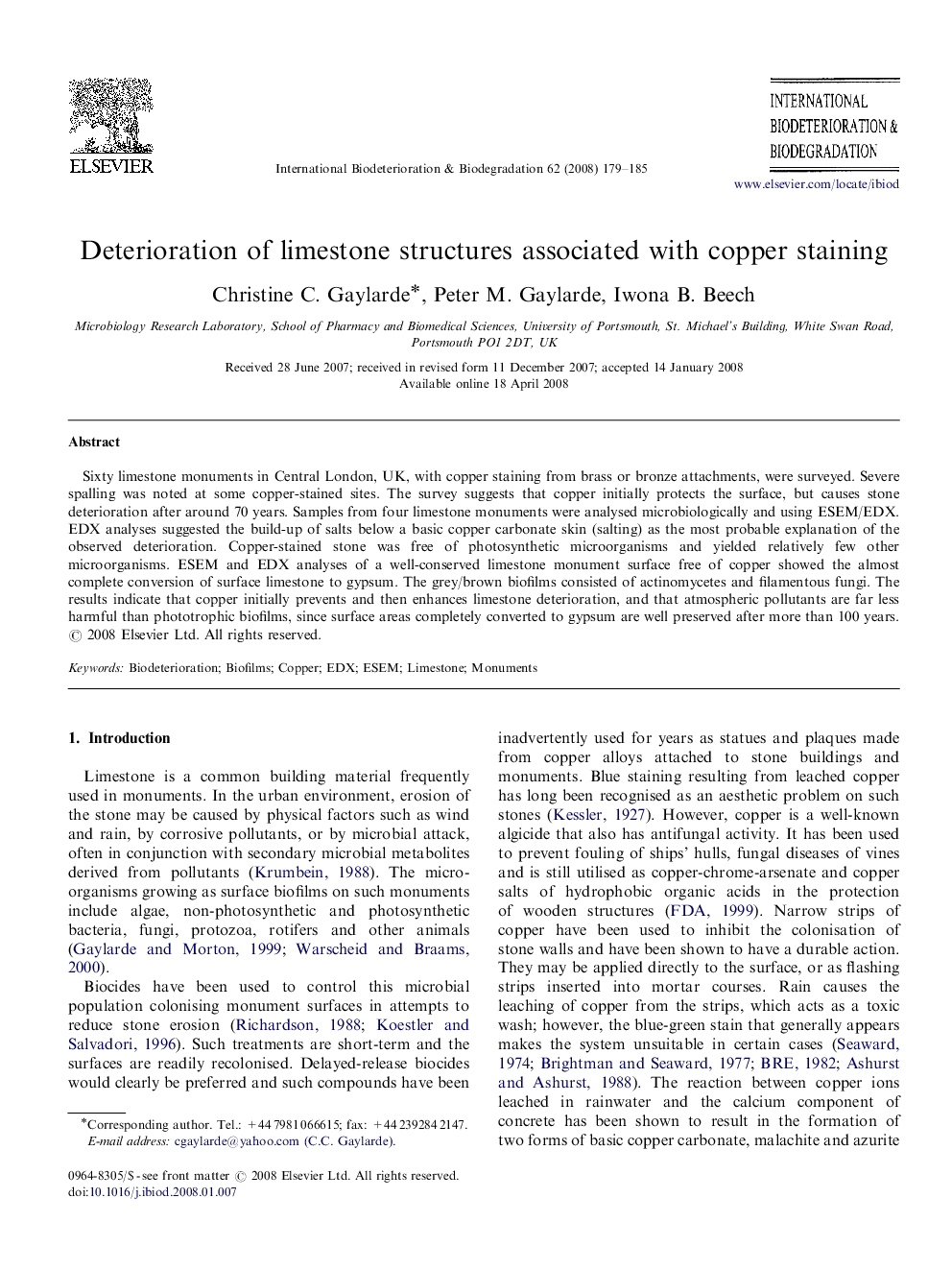| Article ID | Journal | Published Year | Pages | File Type |
|---|---|---|---|---|
| 4365883 | International Biodeterioration & Biodegradation | 2008 | 7 Pages |
Sixty limestone monuments in Central London, UK, with copper staining from brass or bronze attachments, were surveyed. Severe spalling was noted at some copper-stained sites. The survey suggests that copper initially protects the surface, but causes stone deterioration after around 70 years. Samples from four limestone monuments were analysed microbiologically and using ESEM/EDX. EDX analyses suggested the build-up of salts below a basic copper carbonate skin (salting) as the most probable explanation of the observed deterioration. Copper-stained stone was free of photosynthetic microorganisms and yielded relatively few other microorganisms. ESEM and EDX analyses of a well-conserved limestone monument surface free of copper showed the almost complete conversion of surface limestone to gypsum. The grey/brown biofilms consisted of actinomycetes and filamentous fungi. The results indicate that copper initially prevents and then enhances limestone deterioration, and that atmospheric pollutants are far less harmful than phototrophic biofilms, since surface areas completely converted to gypsum are well preserved after more than 100 years.
